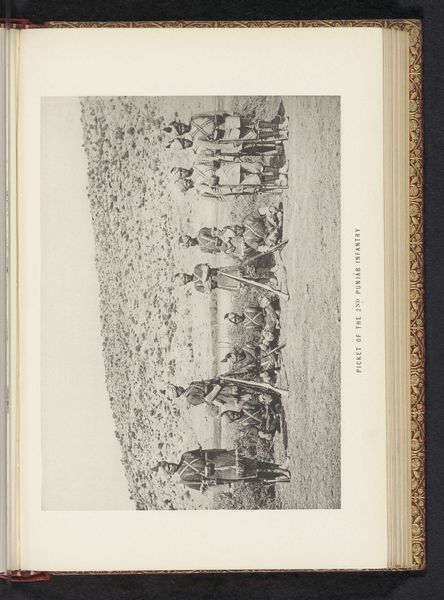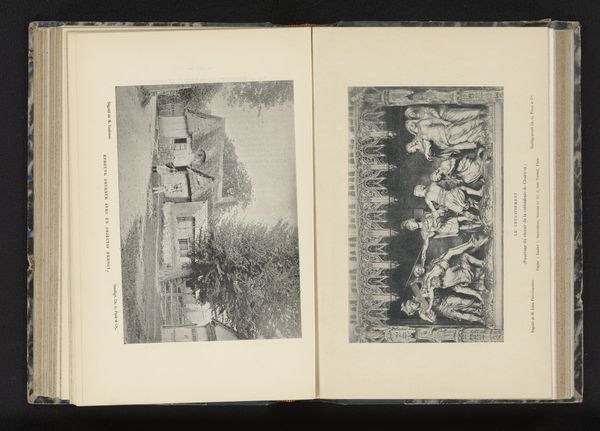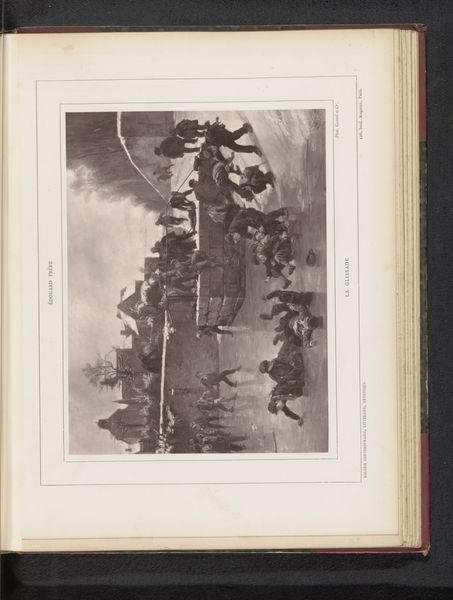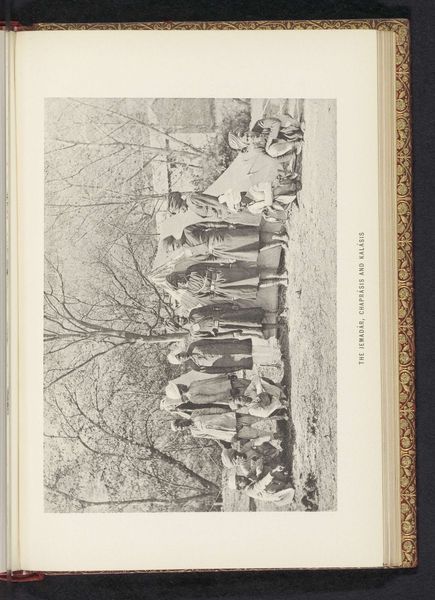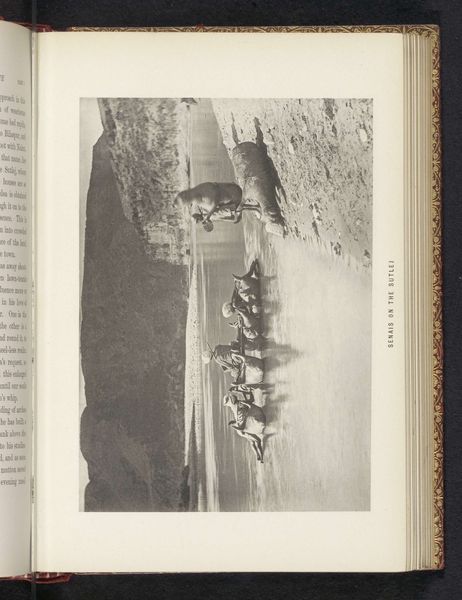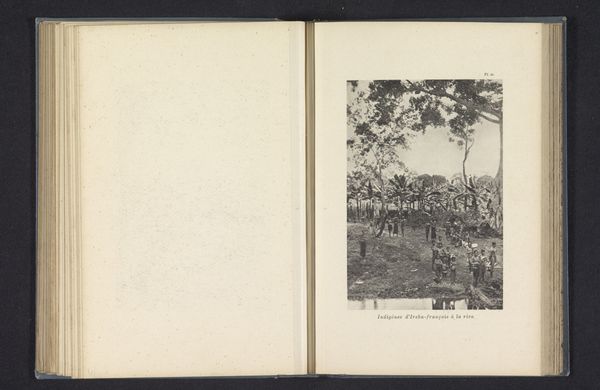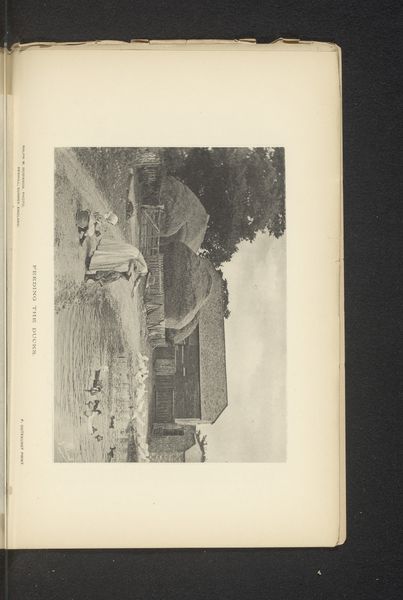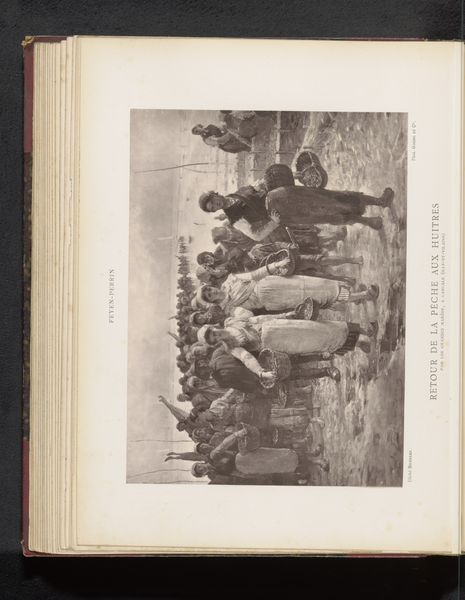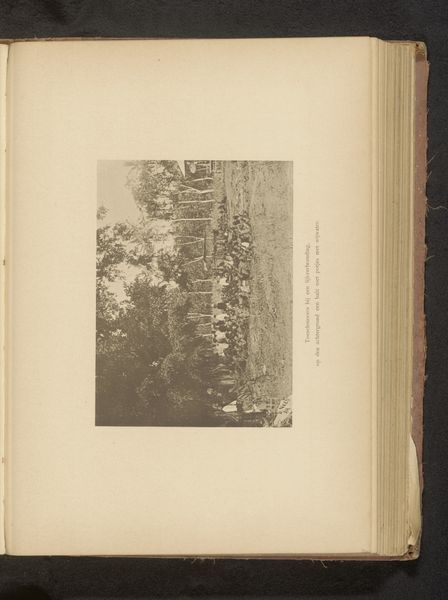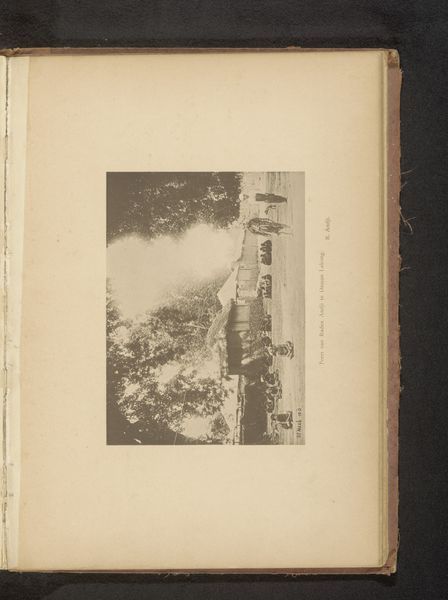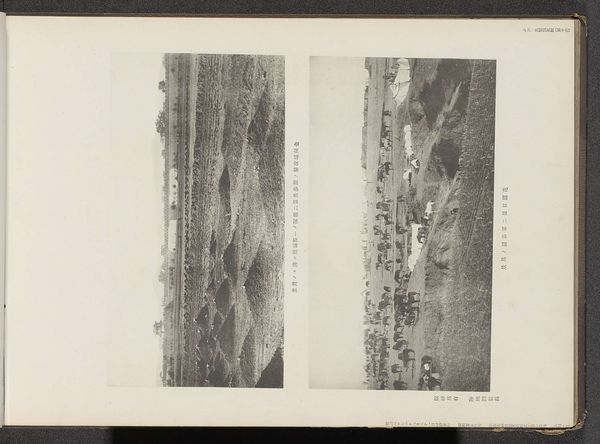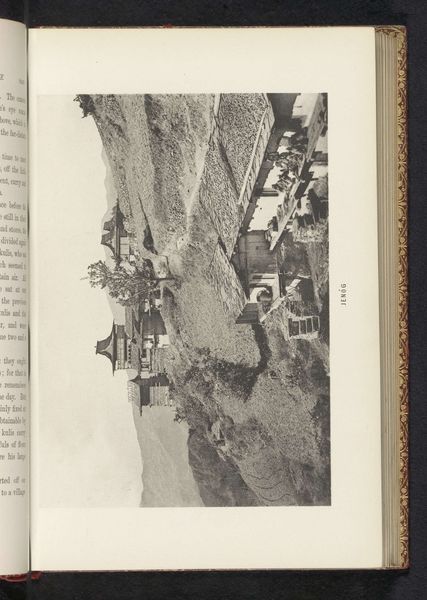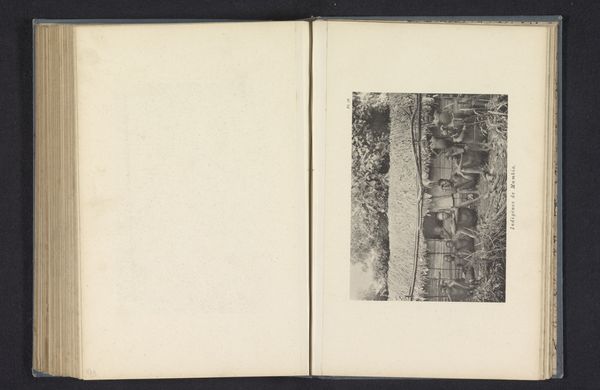
print, photography
#
african-art
# print
#
landscape
#
photography
#
genre-painting
#
realism
Dimensions: height 128 mm, width 179 mm
Copyright: Rijks Museum: Open Domain
Curator: Before you is "Harvest in Kulu. Thrashing maize," a photographic print made before 1895 by Frederick Saint John Gore. It depicts a rural scene. Editor: It feels immediately still, yet full of unseen labor. The light seems almost bleached, flattening the scene into distinct planes, giving it a layered visual rhythm. Curator: Gore seems interested in capturing not just the look, but also the mood and the very ethos of this moment— a collective endeavor tied to nature's cycles. I see continuity in the age-old traditions. Editor: Absolutely, but let’s not ignore the strong horizontal and vertical lines structuring the composition. The repetition of figures and their tools creates a strong visual pattern. The stark tonal contrasts emphasizes the two groups in relation to the surrounding landscape. Curator: Indeed, the arrangement evokes both physical and social harmony, yet there are cultural implications, isn’t it? Think of the land providing, the people working in unison... it becomes an enduring image of communal identity. It tells the viewer, ‘this is how we survive together’. Editor: From a structural perspective, the tonal range—primarily shades of grey—heightens the symbolic content. There's almost no shadow, giving the piece a sense of exposure, as in, it lacks nuance to explore psychological tension. What impact does that hold on the viewing? Curator: The very lack of strong shadows, the almost clinical clarity of the photographic medium itself… all combine to present an objective reality, stripping away sentimental narratives. A powerful and affecting visual document emerges. Editor: Ultimately, that gives it a sense of detachment, making it ripe for cultural and historical assessment, but one must see how aesthetic decisions are always inherently informed, in and outside of, any culture. Curator: I will reflect on how Gore aimed to show Kulu as a place deeply connected to tradition, a timeless image, to see more profoundly how people collectively interact within specific societal structures and its physical context. Editor: It's about recognizing and investigating a new way of understanding photographic form. I learned how the landscape shapes human experiences, reflected through compositional structure and arrangement.
Comments
No comments
Be the first to comment and join the conversation on the ultimate creative platform.
